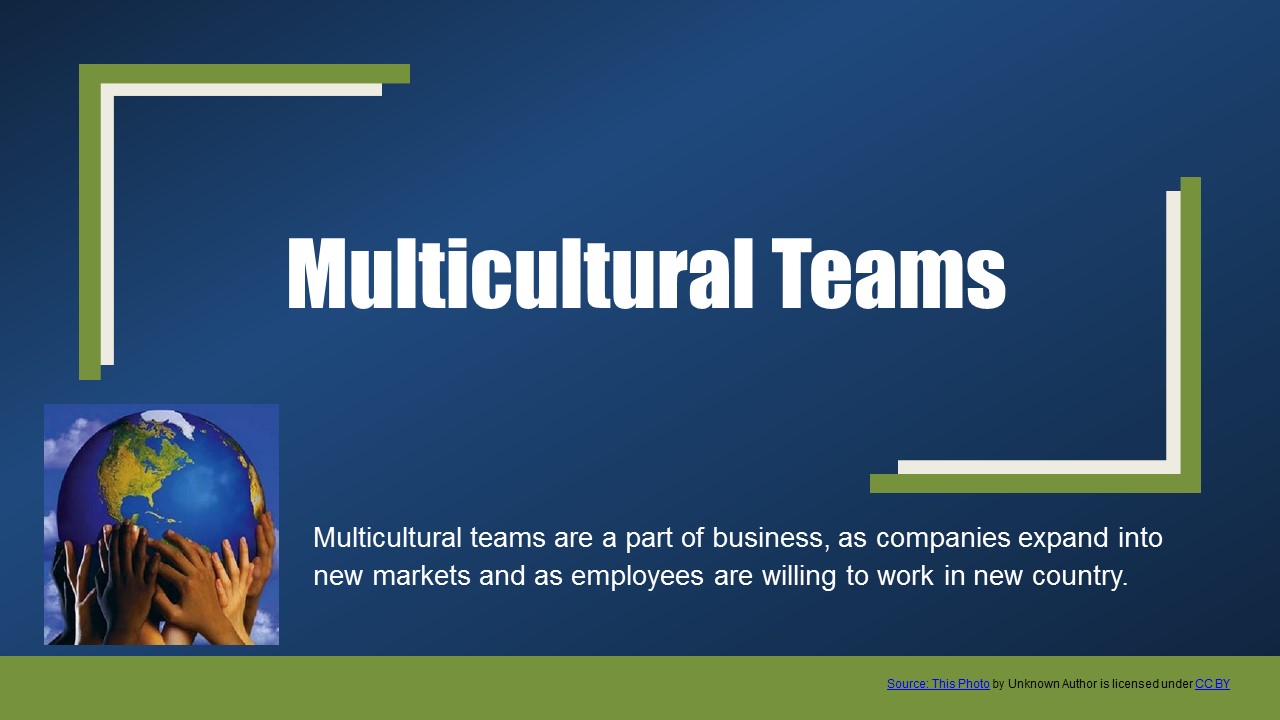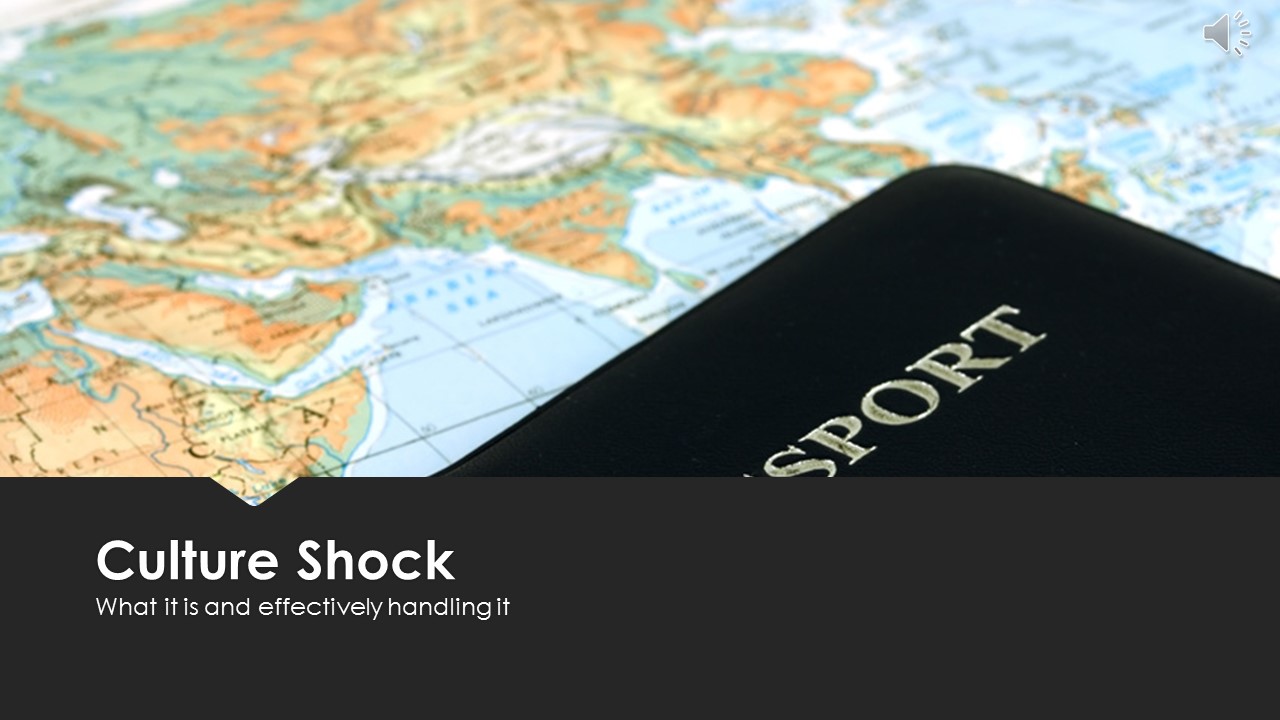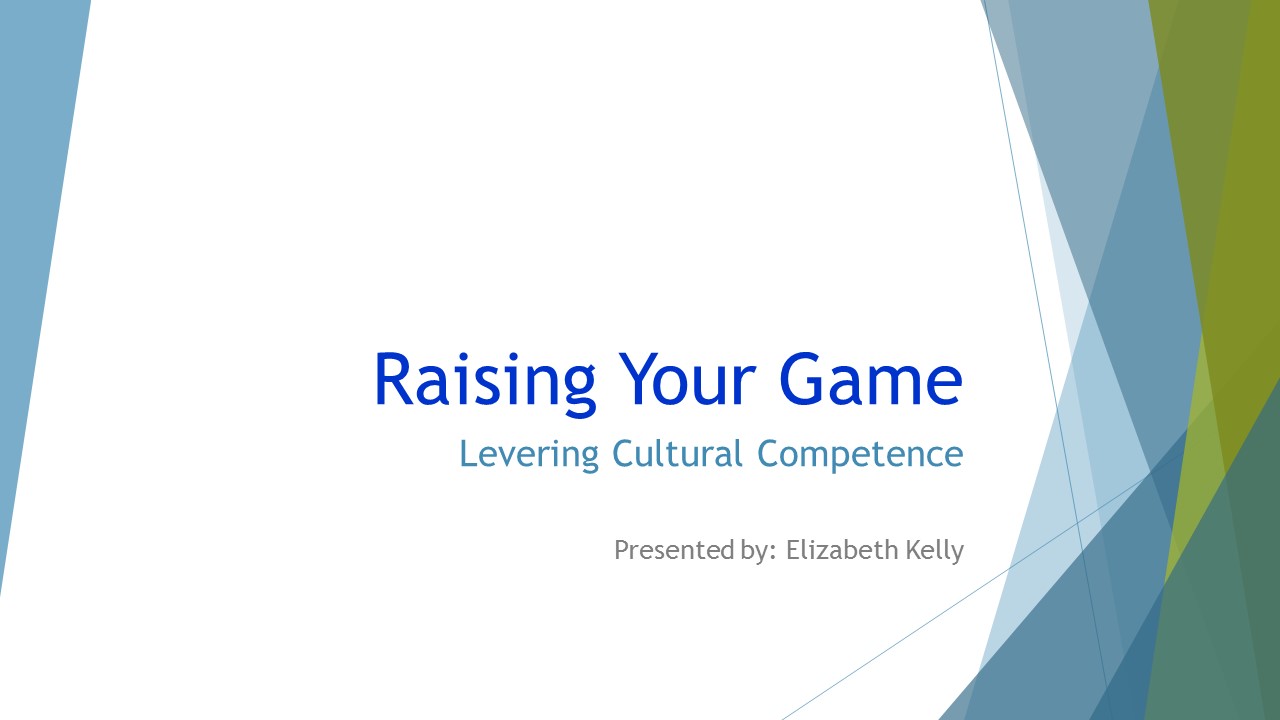News
Multicultural teams are a part of business, as companies expand into new markets and as employees are willing to work in new country.
A video about Culture Shock: what is it and effectively handling it.
Most people are taught at a young age to be polite. Like many aspects of expat life, most of us assume what constitutes good manners is universal until we relocate. It is then we realize that the expectations are not the same. Because people are frequently judged by their manners, nothing as formal as diplomatic protocols, but the importance of good manners should not be underestimated. As a general rule, a person cannot be too polite so I always recommend erring on the side of being gracious. Whether it is greetings, punctuality, visiting, serving people, toasting, dining, gift giving, thanking, or offering something, standard etiquette rules do not exist. Good manners are important in business as well as in social  situations. The differences depend on the culture but can also be impacted by type of situation. Nine major areas are addressed below to help you to understand the range of variation, however the nuances are too plentiful to list; you will need to research your specific country etiquette to determine what constitutes good manners in your location.
situations. The differences depend on the culture but can also be impacted by type of situation. Nine major areas are addressed below to help you to understand the range of variation, however the nuances are too plentiful to list; you will need to research your specific country etiquette to determine what constitutes good manners in your location.
Greetings
A greeting is our initial contact with a person so we want to get it right. We need to learn whether it is best to shake hands, kiss on the cheek or bow. Etiquette questions includes who is greeted first, must you be introduced, should you stand up when you have been sitting or would it be appropriate to greet everyone at a meeting after the meeting has begun. People will be impressed if you have taken the time to learn to properly say the local verbal greeting too.
How strangers are greeted is frequently overlooked but can make an impression on the locals in your new community. Do not think it is fine to simply ignore them. Here are some examples of the norms around the world: in the United States it is not unusual to greet people in your neighborhood or on walking path, in Belgium and France it is polite to greet the sales assistant before asking for help and in Germany people say hello and goodbye when entering and exiting an elevator.
Punctuality
Even in countries where punctuality isn’t as much of a priority, most cultural guides suggest that business associates, job applicants, clients or patients arrive before the schedule appointment time. They may have to wait but this is advisable because you do not want to be unavailable when the person with whom you are meeting is ready.
Fashionably late may be as much as an hour but is usually about thirty minutes. When you have been invited to a social engagement, try to confirm when you are expected to arrive. In some places, arriving at the stated time on the invitation is too early.
Visiting
Is dropping in, to see a friend or neighbor when you have an hour or you are in the area, acceptable? In some countries this is a common practice. However, in other countries this would be quite rude. ‘Coffee’ needs to be scheduled in advance, perhaps a couple of hours or even maybe several weeks. As we get to know people in a new country, it is important to know the proper approach. We don’t want to be too presumptuous but we also don’t want to be too rigid.
Serving
At a recent international women’s meeting, all of the guests were advised to ‘help themselves’ to a beverage. The hostess had put all of the refreshments out on a table for the guests and was busy with other tasks. My Belgian friend waited until she could ask the hostess for permission to serve herself because she was very uncomfortable with the idea of serving herself. Some cultures are very hostess-driven while in other cultures the hostess wants to mingle with the guests and doesn’t want to feel like a servant. However both have the same ultimate goal, to ensure everyone is enjoying themselves.
Toasting
Some countries have very formal rituals/protocols related to toasting. Who toasts and when, what word or phrase is used, do they sit or stand, who fills the glasses, are they emptied completely, do you toast to a group or individuals, are glasses tapped, are all components of the toast where variations exist. Understanding the nuances is particularly important at business events. Here are a couple of examples that demonstrate the complexities: in South Korea the person sitting next to you fills your glass and vise versa, in China use the toast ‘Gambai’, in Sweden look each person in the eye, in India the guest of honor is expected to make a toast after the host’s toast or at the end of the meal and in Brazil the guest of honor toasts to the good health of the host and other guests. Due to the complexities and ritual nature of toasting, research is a must to determine the local practices.
In more casual situations, error on the side of caution, always wait for the host to drink first before taking a sip from your glass.
Dining
Similar to toasting, a number of rules exist that may be different than you are expecting. Even if there are no place cards, there may be designated seating, consequently ask where you are to sit. Other considerations may be how food is eaten, whether to clean your plate completely, where to put your hands and napkin should be placed, on the table or in your lap. Even if it is a business meal, when it is appropriate to discuss business isn’t consistent. Do some research, ask someone in advance and observe the people around you to gain insight into expectations in your new country.
Gift giving
Gifts are given when people are invited into someone’s home, for life celebrations such as birthdays or weddings, and sometimes in the course of doing business. What you give, in what it is wrapped, when it is opened and the value of the item are all essential aspects of gift giving. An HSBC commercial clearly exemplifies a gift giving difference. In the US when a person makes a hole-in-one in golf he/she buys the members of the foursome a drink but in Japan, the person is expected to give expensive gifts to the other members of the foursome.
Thanking
While technology plays a role in how thanking occurs, it is rare that someone feels over thanked. Learn whether written ‘thank you’ notes are expected after visiting someone’s home, for gifts received or condolence cards. When someone has taken the time to purchase a gift or open their home to you, a ‘thank you’ note indicate your appreciation and will be valued.
Offering something
In some cultures, people automatically decline whatever they are offered. Consequently, it is always a good idea to offer 2-3 times when someone says “no thank you” to determine if it is a true “no” or it was a polite “no” but actually, “I really would like the coffee, small gift, or help that you offered me”.
Whenever you are invited to someone’s home for a social activity. Always offer to help or bring something. The offer may be declined but generally people would appreciate your willingness to help them.
We are guests in another country so it is nice when we are creating a good impression of ourselves and our home country. Good manners are noticed and appreciated so ensure that you and your family are well-versed about what is expected to be polite in the local culture. It may open doors and help you to build new relationships.
Please tell us what is consider polite in your culture that might surprise people from another culture?
 The modern globalized society requires us to think globally and to interact with many different cultures, and it is crucial to know how to properly communicate abroad or with people from abroad. Receiving negative feedback from the person you’re speaking to is not very uncommon, and in the worst case scenario this could even endanger a potential business partnership. That’s why it is important to start preparing to face an either partially or completely different approach to communication well in advance: in general, if you aim to successfully connect and deal with people abroad you should be aware of some basic tips for improving your global communication skills.
The modern globalized society requires us to think globally and to interact with many different cultures, and it is crucial to know how to properly communicate abroad or with people from abroad. Receiving negative feedback from the person you’re speaking to is not very uncommon, and in the worst case scenario this could even endanger a potential business partnership. That’s why it is important to start preparing to face an either partially or completely different approach to communication well in advance: in general, if you aim to successfully connect and deal with people abroad you should be aware of some basic tips for improving your global communication skills.
- Intercultural communication involves two or more parties, each one with a different culture, tradition, and approach: it is a circular exchange of knowledge that should follow some predetermined paths in order to be effective.
- Language is vital: English is acknowledged as the universal language and it is used and understood worldwide. Speaking the local language is, however, a way of getting closer to your host country’s culture and traditions, and is thus preferable to just making do with English alone.
- Language is only the tip of the iceberg. Make sure to adapt your body language and your behavior to the context and your addressees, as well. Don’t be afraid of imitating the intonation and gestures of the locals.
- Communication is a channel through which you can transmit information. You should pay attention to the content of that information, as well: what you want to communicate should be adapted to the audience in the same way as the form of communication.
- You are an expat and you are being hosted by a foreign country: it is up to you to adjust your approach. Don’t expect an entire culture to change for you.
- Think cross-cultural! You may have heard about cross-cultural intelligence or cross-cultural competence and you may find these ideas unclear. As the word itself suggests, it is about crossing cultural borders and interacting in an unusual way; therefore having an open mind and an entrepreneurial approach play a vital role here.
- Study and practice: as with every other soft skill, global communication can surely be studied but, most of all, it needs to be put into practice.
- Observe and react: first-hand knowledge, collected on the street or from experienced expatriates, can teach you what books and the internet cannot.
- Ignore stereotypes, because they are counterproductive and they may provide shadowy and untrustworthy knowledge.
- Don’t underestimate the role of global communication skills! Interaction abroad is a challenge, but it is necessary. Therefore, it is important to be well-prepared and open-minded, and to be ready to get to know the big world that is waiting out there.
Guest Blog the Internations Team
Observation is an extremely powerful tool, exemplified by the fact that it is a basic component of scientific experimentation. Observation is also an essential tool for individuals interacting with other cultures.
One of the pieces of advice that I always give to intercultural training participants who will be working and/or living in another country is to adopt this method of information collection. A tremendous amount of useful material, especially the subtleties of behaviors, will become clear through observation of locals.
My friend, Al, responded to this advice by saying ‘that’s just logical, everyone knows that.’ While he may be right that the point seems obvious, today there are so many distractions that it is easy to miss the hints. People appear to give little or no thought to their situation and the differences around them. Too many people seem to forget or minimize the value of observation, especially as they are so busy focusing on the future and their next activity. Sadly, many individuals appear to be more engrossed in their smartphones or ipads than their surroundings.
Watching what is happening around you can provide insight into the nuances of behaviors, for example:
- Notice where people sit at a meeting table
- Listen to who speaks and who remains quiet
- Observe greetings and how respect is shown.
- Look where people place their napkins or their hands at the dining table
- Watch the system for being served at a bakery or market
- Determine if public displays of affection are acceptable
- Survey the type of clothing that is worn
- Study the interactions between friends, family members and colleagues
Preparation, such as an intercultural training program, is always helpful but it is virtually impossible to learn and remember everything. Observation complements what you have already learned or may jog your memory. People need to watch what others around them are doing. Use the same tool that scientists apply and learn about the subtle differences of the culture in which you are living and working.
Would you share an example of something you learned through observing a new culture?
 According to a Washington Times article (Dec 2012), 84% of the world has a faith. How their faith is practiced varies by religion, country, and individuals. Religious devotion is quite personal, from the once-a-year visitor to the zealot. Religious beliefs can influence a wide variety of aspects of our lives including rituals, diet and appearance.
According to a Washington Times article (Dec 2012), 84% of the world has a faith. How their faith is practiced varies by religion, country, and individuals. Religious devotion is quite personal, from the once-a-year visitor to the zealot. Religious beliefs can influence a wide variety of aspects of our lives including rituals, diet and appearance.
The religious ideals of some people are quite evident by outward appearance. Consider:
- Some Christians wear a cross or a religious metal such as St. Christopher; priests may wear a white collar; nuns a habit
- Hasidic Jewish males usually have hair curls (payots), some Jewish men wear a kippah aka yarmulke
- Many Sikh men wear turbans
- Some Muslim women may wear an abaya, others a hijab. The hijab may also include a veil
Most countries in Europe boast of religious freedom and are quite tolerant of religious practices. For example in the UK, Sikhs who hold public jobs such as police officers are allowed to wear a turban, (Though the turban must be in compliance with a dress code, e.g. the color.) These countries have had to develop policies and procedures to deal with religious differences
Germany doesn’t have a law against Muslim women wearing a hijab with a veil so individuals from conservative Muslim countries can still visit or live in Germany without compromising their values. As a result, Ihad wondered what would happen in a situation where identification would be important. While waiting to pick up a friend at the Munich airport who had to go through immigration, I was able to observe the review process of a young family arriving from Saudi Arabia. The woman wore a veil but was required to show her face to the immigration official because the official had to be able verify her identity against her passport. Circumstances trumped religion.
Correspondingly, some countries have begun to evaluate what practices will be acceptable. France passed a law in 2010 which was upheld by their high court in July 2014, that made wearing hijab with a veil in public illegal. (Reuter’s article) Lawmakers said the law was needed for public safety. Most law enforcement officials believe that it is vital to be able identify an individual i.e. to see a person’s face. Belgium and Switzerland have passed similar laws.
Some people and organizations believe that this law goes against religious freedom. Law enforcement officials and security experts believe that the privilege of wearing a veil could be abused by unscrupulous individuals. Balancing the rights for religious freedom with the safety of the general public is never easy.
What are your thoughts?
 Making a good first impression is something most people strive to do especially in business. Various factors can influence how people are perceived including personal appearance, attitude, body language and their message. All that being true but the initial greeting is key. Since greetings differ from culture to culture, intercultural trainer such as myself will try to impress upon their clients the importance of determining and using the appropriate greeting for the people with whom you will be meeting.
Making a good first impression is something most people strive to do especially in business. Various factors can influence how people are perceived including personal appearance, attitude, body language and their message. All that being true but the initial greeting is key. Since greetings differ from culture to culture, intercultural trainer such as myself will try to impress upon their clients the importance of determining and using the appropriate greeting for the people with whom you will be meeting.
When the Duke and Duchess of Cambridge(Prince William and Kate) arrived in New Zealand they were treated to traditional warrior’s dance called a Haka and they greeted local dignitaries with a Māori greeting known as a Hongi, Hongi involved the touching of noses and foreheads. Most reference material advises visitors to New Zealand that a hand shake is correct. However, as evident by the royal visit, when interacting with other cultures, exceptions frequently need to be considered.
In many Arab countries men will not shake the hand of a woman. As a liberated woman, I’ve struggled with this custom. However, after observing the greeting the Queen of Belgium received from a royal member of the Saudi family, I’ve soften my stance. This man used a formal Salam, touching his chest (heart), lips and then forehead. The greeting was very respectful and can remind us that there are multiple ways to show respect.
Kissing, bowing or shaking hands still remain the most common methods of greeting but even these are not without their nuances. How many kisses on the cheek should be given, one, two or three? How well do you have to know the person? When bowing, how low and long should your bow be? How firm should the handshake be? Is the other arm gripped? And what do you do with your other hand? Bill Gates learned the hard way when he shook the hand of the South Korean president, that his second hand shouldn’t have been in his pocket.
The subtle differences of greetings can affect the impression you make. Do your research or ask someone in the know.
Share a story about greeting in another culture.
Most people love lists, particularly some of us as we get older; without a list things wouldn’t get done. I was recently advised when contacting the media about a news items that it would get more attention if it included a list such as ‘the top 10 tips for traveling abroad.’ Similar to ‘top’ lists, dos and don’ts lists are equally popular because it puts information into nice, neat categories that are easier to remember. While there are certainly benefits to dos and don’ts, they are less effective for areas where vast degrees of variation exist, such as cultural etiquette.
We know that people greet each differently depending on factors including: age, familiarity, situation, and culture. When we are introduced to someone we are making a first and potentially lasting impression, so most of us strive to do it well. Bill Gates’ recent cultural faux pas of shaking the president of South Korea’s hand while his other hand was in his pocket is an example of the challenges with dos and don’ts. Cultural guides frequently provide advice about proper greeting etiquette by country, but I have never read one that reminded readers of the importance of not having your other hand in a pocket. People always want cultural dos and don’ts but this is a great example of the challenges with such lists. Lists can never be exhaustive.
Bill Gates’ big faux pas is newsworthy because of who he is. It is doubtful that is will have any long-lasting negative effect on him or Microsoft, however, the ramifications for other individuals who make a cultural faux pas while conducting business across cultures might not be as negligible. Everyone interacting with people from other cultures needs to develop some cultural competence, either through training or reading, and apply the golden rules of being respectful and non-judgmental.
What is your opinion about dos and don’ts?
Elizabeth
Interested in building cultural competence? Check out Subtle Differences, Big Faux Pas, more information at: www.subtle-differences.com
Time is so basic to our lives. We learn to tell time at a very young age. If we want to know the time of day or the day of the week, we simply look at a clock, a calendar, or our iPhone. However, even these aspects of time are not so simple: do you tell time using a 12-hour or 24-hour clock? Do you say ‘half seven’ of ‘half past six’? Moving beyond the basics of time to attitudes toward time and mindsets and approaches can become quite complicated.
For some people time is essential, they might be described as ‘slaves to time.’ But for others, time is inconsequential and they believe ‘good things come to those who wait.’ We might agree in some situations: waiting for the outcome of a critical patient takes an eternity or the exhilaration of riding on a rollercoaster lasts only a few moments. Usually, though, time is not measured in the same units and how it is viewed and valued can vary considerably. People comment that as they get older time seems to move faster. Children believe school days and summer vacations last forever, while many business people wonder what happened to the day because they didn’t get enough accomplished. They say ‘time flies’ or wish they ‘had a few more hours in the day.’ Many factors including culture, stage of life and circumstances influence how people regard time. The challenges begin when they collide.
Several recent events reiterated the complexities of time:
The manuscript of my book is being proofread because the first time the publishing deadline resulted in a less than perfect product. In publishing, deadlines are quite stringent so we agreed on a deadline but the proofer contacted me indicating she need more time to complete the work. While deadlines have their place, if meeting a deadline compromises the quality of the product, should one be unyielding? Now some would say, “I want both a quality product and I want it on time,” it may be what we want, but we don’t live in a perfect world.
I spent five hours on a walk with my friend, Ruth, and her walking buddies named the Mama Mias. For this retired group of ladies this weekly outing is a healthy way to spend time with friends; it is invigorating, yet relaxing. While I enjoyed the exercise, taking that much time out of my work day is difficult. When with friends, five hours is nothing, however five hours away from the job is sizeable. Even though I’m self-employed person, I still struggle with how I should spend my time.
Whether it is about setting family mealtimes, celebrating life’s milestones, or business deadlines, perception of time vary significantlly. No matter a person’s attitude towards time, it is a part of everyone’s life and time is relative. Don’t judge too quickly this would be a big faux pas.
What situations have you encountered where the differences created challenges? What was the primary source of the differences?
What attitude toward time should dictate in multi-cultural situations? Some people answer that it should be the dominant (host) culture or culture with the customer or purchaser? What do you think?

Subtle Differences, Big Faux Pas
by Elizabeth Vennekens-Kelly
This book aims to help you appreciate that just because something is done one way in your country does not mean it is acceptable in another. This book is a fun, light-hearted, but very important first step towards establishing intercultural awareness.
Using fist names may seem like a friendly way to begin a meeting, but will your business associates see it that way? Want to give yellow flowers to express gratitude and friendship to your dinner hostess… but will she understand the message? Will your thumbs-up gesture be interpreted as positive or offensive? Situations like these arise regularly when you interact with individuals from different cultures. Cross-cultural gaffes can hurt relationships, business deals and your chance of happiness overseas.
Cross-cultural trainer, Elizabeth Vennekens-Kelly, is an American and former healthcare executive. She is married to a Belgian and now lives and works in several European countries
File Size: 2566 KB
Print Length: 241 pages
Publisher: Summertime Publishing; 1 edition (March 25, 2012)
 Order the book:
Order the book:
Food is an essential component of our lives. Examine cultural differences through the topic of Food and Dining.
Download the pdf of an excerpt of Elizabeth Kelly’s presentation “Food & Dining. So Basic, Yet Sooooo Complex”.





















